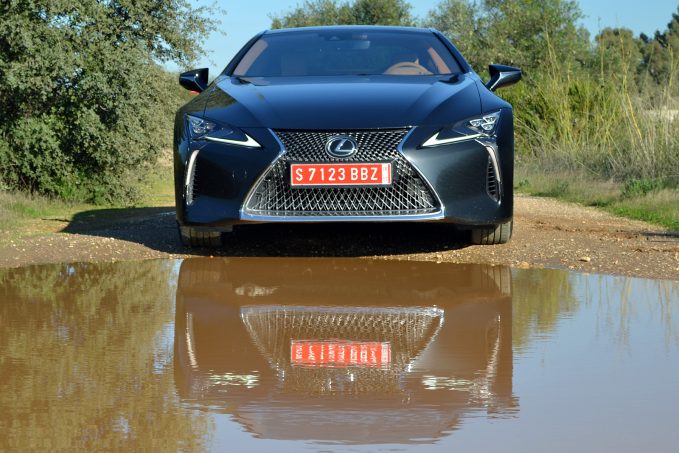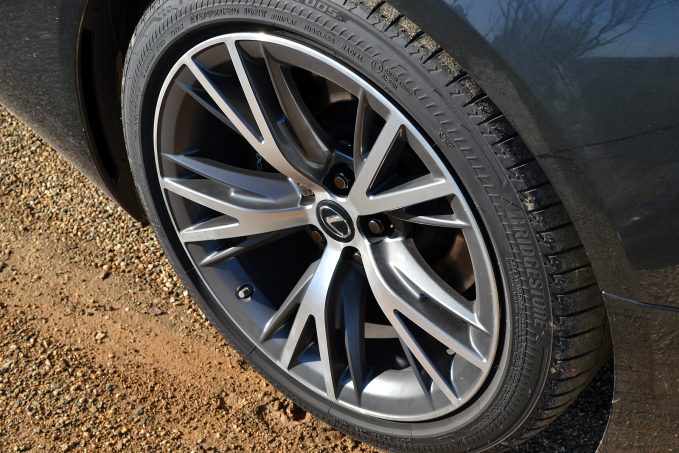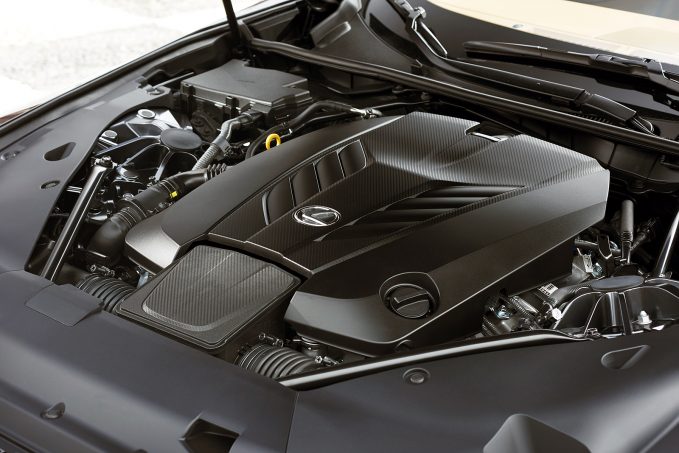Seville, Spain, is among the oldest cities in Europe, founded more than 2,000 years ago, when the Roman empire was still in its heyday.
Trudge around the city for any length of time and you’ll quickly encounter relics that reveal some of Seville’s history. A cathedral that Christopher Columbus prayed in before his fateful first voyage across the Atlantic Ocean; a royal palace with roots that trace back to the early 12th century; and even a pub or two that date back a few hundred years. It all stands in stark contrast with the car we’re driving in this ancient place, the 2018 Lexus LC500, which is one of the most modernly beautiful cars ever built.
Rolling Art
Because this point should never be belabored too much, the LC500 is a stunning exercise in design. If beauty is in the eye of the beholder, then we’re all beholden to the coupe’s good looks and glamor.
Seldom does a production car stick so closely to the concept on which it’s based, but that’s exactly what Lexus’ designers and engineers have graced us with in the LC500. Pictures don’t do the car justice, though the people of Seville and every outlying community we rolled through tried their damnedest to capture a piece of the coupe’s glory, snapping photos everywhere we went — and with good reason.
ALSO SEE: 2017 Infiniti Q60 Review
The front spindle grille will make you want to live in a jurisdiction that doesn’t require a front license plate, while the head- and taillights look as futuristic as anything from McLaren. There’s nary a line on the LC500 that doesn’t flow seamlessly into the next, with metal and glass swooping and cascading like it was all molded from one piece of material. The entire thing looks as though it was designed and crafted by a sane and sober Salvador Dali, the lines falling away with purpose to create an artistic masterpiece.
More Than a Pretty Face
For all its style, the LC500 has plenty of substance to match. It starts with a taut new platform developed with a focus on rigidity. That means a multi-material construction that uses shapes, not density, to reduce flex, and a low center of gravity and creative packaging to get the job done.
Plenty of high-strength steel, along with aluminum and carbon fiber, was integrated into the LC500 using a variety of bonding methods, including structural adhesives and laser screw welding, to keep it all together.
The car’s center of gravity sits a mere 20 inches (510 millimeters) off the ground, putting it almost at the driver’s hip point, while it’s actually a front midship layout, with the engine pushed closer to the firewall for better front/rear weight distribution.
Underpinning the new platform is a new suspension that features dynamic dampers at all four corners and a double-joint wishbone multi-link setup in the front that splits the upper and lower arms into two pieces each, as well as beefy 13.3-inch front brakes with six-piston calipers, and 12.1-inch rear brakes with four-piston grabbers.
Where Old Meets New
Under the hood lies a pair of powertrain choices that, while up to par, represent the LC500’s only real reach into the parts bin. Gas-powered versions get the same 5.0-liter V8 found in the RC F coupe and GS F sedan, a stout if not slightly little dated option. Bucking the trend of turbocharging, the 5.0-liter breathes on its own and is good for 471 horsepower and 398 lb-ft of torque, representing a very slight increase in output over the same engine in the F-tuned versions of the RC and GS.
ALSO SEE: 2016 Lexus RC F Review
The entirety of the engine’s torque comes into play at a stout 4,800 rpm, a far cry from the LC500’s forced-induction foes, while all the horsepower doesn’t come online until a screaming 7,100 rpm, a number it will gladly reach provided an empty stretch of road and a healthy serving of throttle input. Pushing power rearward is a new 10-speed automatic transmission that’s been developed with the shortcomings of the existing eight-speed gearbox in mind, with equal shift intervals between each gear.
Borrowing from the hybrid version of the GS, the LC500h gets its power from a combination of a 3.5-liter V6 gas engine and a dual-drive electric motor. And now for the disappointing bit. Some will appreciate the added electrons of the electric side of the hybrid system for their ability to cut fuel consumption, but those hoping for an electrified boost in performance won’t find what they’re looking for here. Net system output is 354 horsepower, which isn’t much — especially when compared to the V8.
Engineers supplemented the electric motors with what’s being called a “four-stage shifting device” that’s basically a four-speed transmission, allowing for more power to be put to the rear wheels at once thanks to higher engine speeds.
To Track or Not to Track
It will come as a surprise to few that that the LC500 is tailored more to the street than the circuit, but that doesn’t mean it isn’t capable of scratching the itch when called upon. Lexus gave us an opportunity to stretch both versions’ legs on the Circuito Monteblanco, a 2.76-mile track that features a variety of turns capped by a long front straight.
With the optional limited-slip rear differential in tow, along with the rear-wheel steering setup, the gas-powered LC500 performed about as expected on the track. Measured and fairly precise, it was up to most of what was thrown its way, with only the tightest of turns leading to a propensity to understeer. Through wide, sweeping turns, the car seemed to almost shrink, and proved able to carve corners surprisingly well, while the V8 engine made exit speed a non-issue, supplying plenty of power when needed.
ALSO SEE: 2017 Chevrolet Corvette Grand Sport Review
The electric power steering system, both with and without the variable ratio provided by the four-wheel steering, was plenty firm while providing enough feel and feedback to know where the limits were, while the brakes slowed the hefty 4,280-lb (1,935 kg) LC500 with little fade.
Hitting the track in the LC500h proved less rewarding, with the hybrid powertrain feeling sluggish in comparison. It just failed to provide the same giddyup as its V8-powered sibling, while its transmission setup didn’t seem quite as comfortable with rapid-fire gear changes. It also suffers a mild weight penalty thanks to the additional heft of the hybrid system, tipping the scales at 4,435 lb (2,012 kg), but it doesn’t feel much heavier, just less powerful.
Naturally, it was out on the open roads where both powertrains felt most at home, combining with a tremendous ride comfort to provide plenty of enjoyment in any of the six driving modes available. It was also out on the road where the sultry cabin shined the brightest, offering up stylish and comfortable confines that were more than adequate for a full day of driving. It’s easily just as luxurious as any of its competitors, with plenty of of hand-stitched leather and Alcantara, and a pair of seat designs to choose from. The infotainment system did, however, prove to be one sore spot, with no touchscreen on the dash, and a clunky interface that was complicated to operate.
The Verdict: 2018 Lexus LC500 Review
The Lexus LC500 is easily the best-looking of the bunch when it comes to luxury coupes — and beyond — but is it worth the price of admission? Details are scarce at the moment, but it looks like pricing should be somewhere in the neighborhood of $100,000 for a gas-powered model, which seems reasonable enough for what it offers. Compare that to the competition — of which there are plenty, ranging from the Jaguar F-Type to the BMW 6 Series and even the Mercedes-Benz S-Class— and there’s no reason it shouldn’t be on your shopping list come the time it goes on sale in the late spring. The hybrid version will command a price premium, though Lexus assured us it would be much more reasonable than other electrified offerings. In the end it all comes down to a matter of taste and how much you’re willing to spend, but if you’re just trying to look good, then you can’t go wrong either way.











